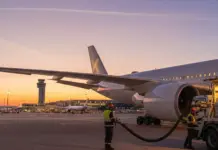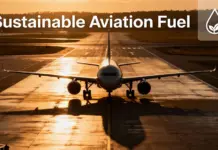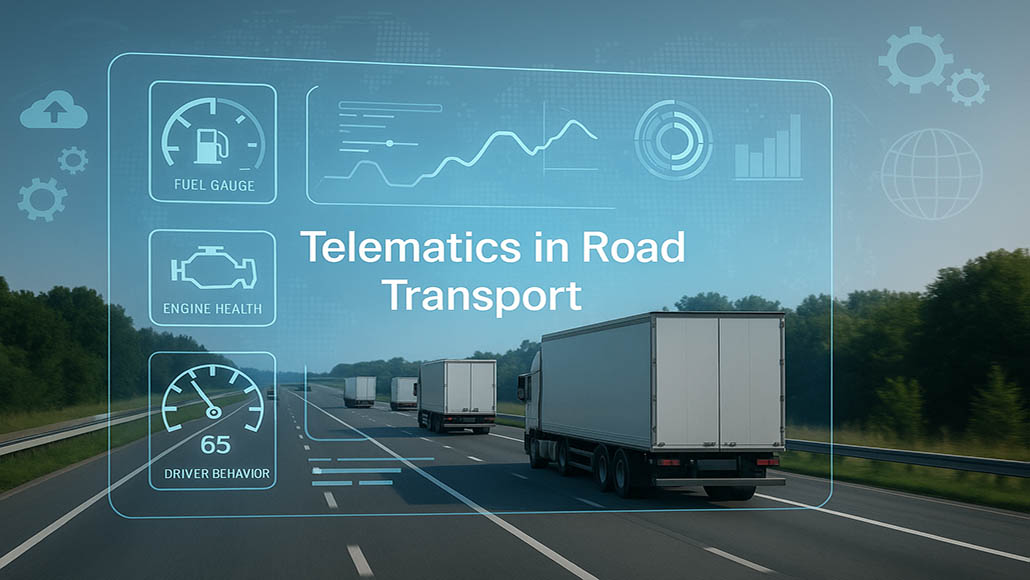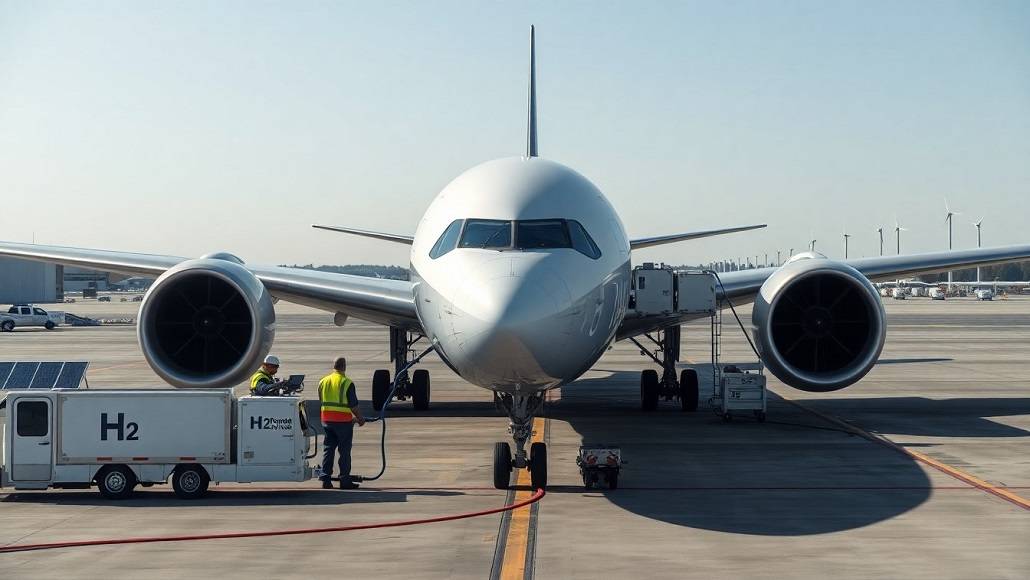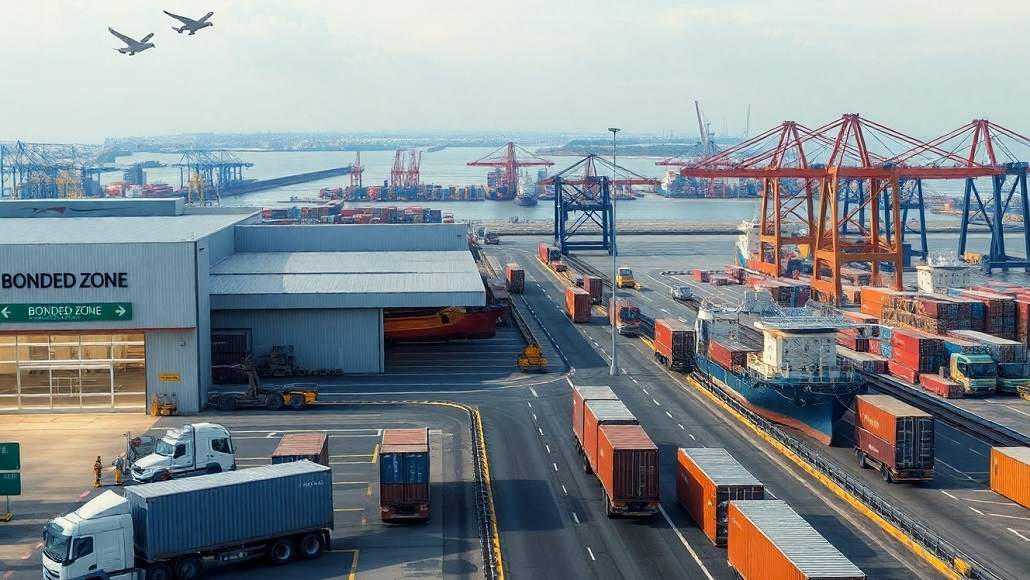One of the biggest problems the airline industry has ever faced is “decarbonisation.” As more and more people throughout the world call for action on climate change, the conversation around sustainable aviation has gone from cautious hope to full-on exploration of groundbreaking new ideas. Hydrogen-powered aeroplanes are at the forefront of zero-emission flight, a field of invention that could change the future of flying in a big way. But the route to real implementation is full of challenges, with both promising technology and scary engineering, infrastructure, and regulatory problems along the way.
Why Hydrogen Should Be Used in Aviation
According to the Air Transport Action Group (ATAG), aviation is responsible for around 2–3% of all carbon dioxide emissions in the world. By 2050, the number of people who want to fly is expected to double. However, if the sector doesn’t do anything, its emissions could go up a lot. Standard methods for lessening this effect, like improving engine efficiency, simplifying flight paths, and combining sustainable aviation fuels, have made some improvements but have not yet made it possible for the world to have truly zero-emission travel.
This is where planes that run on hydrogen come in. When hydrogen burns in a fuel cell or is injected straight into customised turbines, it only makes water vapour as a byproduct, unlike regular jet fuel. Not only is hydrogen beneficial for the environment, but it also has a gravimetric energy density that is almost three times that of kerosene. This means that it could lead to the best performance for long-distance, zero-emission flying.
Technology Barriers Faced by Hydrogen-Powered Aircraft
The path to widespread use of hydrogen-powered planes is difficult because of technical issues, even though it is promising. One is storage. When hydrogen is in its gaseous form, it has a very low volumetric energy density. It would need to be compressed to high pressure to store enough energy on board. This would be very difficult for the plane and ground handling systems to do safely.
Even when hydrogen is in liquid form, it weighs more than regular fuel tanks and is usually cylindrical or spherical to handle pressure. This changes the way the aircraft flies and how it is built. To add these tanks to wings or the fuselage, new ideas are needed to deal with weight, safety, and overall efficiency.
A plane that runs on hydrogen may either use energy made by fuel cells to power electric motors or burn hydrogen directly in a gas turbine that has been adapted to work with hydrogen. The fuel cell technology is very fuel-efficient and doesn’t release NOx, but it doesn’t have the power density that big long-haul planes need right now. The other hand has burning hydrogen that can make thrust, but it can also make nitrogen oxides if it isn’t managed well.
Recent Progress and Breakthroughs
Hydrogen Aircraft Market is estimated to be valued at USD 8.24 Bn in 2025 and is expected to reach USD 33.92 Bn in 2032 exhibiting a compound annual growth rate (CAGR) of 22.4% from 2025 to 2032. There have been some amazing improvements in hydrogen-powered planes in the last several years. In September 2020, ZeroAvia made history by flying a commercial-grade flight powered by hydrogen fuel cells for the first time. The flight lasted 30 minutes and took place in the UK on a six-seater Piper M-class plane. Airbus, on the other hand, has promised to have a hydrogen-powered commercial plane available by 2035 and is spending a lot of money on new technologies for propulsion, storage, and systems integration.
Airports and petrol stations are starting to build hydrogen supply networks at the infrastructural level. In Rotterdam, Toulouse, and Los Angeles, projects are looking into whether it is possible to make a lot of hydrogen, turn it into a liquid, store it, and refuel planes at major airports. These initiatives would usually use renewable energy sources to make green hydrogen. This way, flying without emissions won’t be cancelled by carbon emissions from other sources.
The Effects on the Economy and the Environment
Changing to hydrogen-fuelled planes is not just a change in technology; it’s also a big change in the way air travel works. Huge upfront capital expenses for research, development, certification, and retrofitting are needed. The long-term economic case for operation is strong, especially because the cost of making green hydrogen keeps going down. The International Energy Agency (IEA) found that in the ideal places, renewable hydrogen would cost about $2 a kilogramme by 2030, which is close to the energy value of Jet A-1 fuel.
According to the European Union Aviation Safety Agency (EASA), hydrogen propulsion in aviation has the potential to significantly reduce greenhouse gas emissions over an aircraft’s lifecycle compared to the current fleet that runs on kerosene, if the hydrogen comes from renewable sources. The lowering isn’t only for CO₂; hydrogen planes might also have a big impact on air quality and particle matter around airports. However, one area that needs extra attention is how water vapour emissions at high altitudes can cause contrails to form and have indirect effects on the climate.
Working Together Between Regulators and Businesses
For the ideal of flying on hydrogen to come true, rules need to be the same across the board, and the industry needs to work together. To make sure that hydrogen storage, handling, and propulsion systems are safe and can work with each other, certification methods should be made. This should not stop new ideas from coming out. The International Civil Aviation Organisation (ICAO), EASA, and the United States Federal Aviation Administration (FAA) are already working with people in the sector to write the rules that will explain how hydrogen will be used in commercial aviation.
There are also partnerships forming along the value chain. Together, aircraft makers, energy firms, airports, and governments are putting money into hydrogen demonstration projects, pilot schemes, and building infrastructure. The Hydrogen Council says that there are more than 200 big hydrogen projects going on throughout the world, and most of them can be used in aviation as well.
The Road Ahead: Chances and Prospects
Even though there are a lot of technological and economic problems to solve, the push towards hydrogen-powered planes is picking up speed. In the next ten years, there will be more flying demonstrations, certification successes, and infrastructure pilots. This will make it easier for businesses to start selling their products.
Hydrogen planes will continue to be a major focus of aviation’s efforts to become more environmentally friendly. The goal is not just to cut down on emissions, but also to make flying a whole new method that takes use of the speed and range of air travel while having a much smaller impact on the environment.
Conclusion
Hydrogen fuel-cell aeroplanes is the possibility of zero-emission flight. The idea of genuinely clean flight is advancing from the realm of theory to the realm of possibility thanks to the combined power of scientific creativity, public-private investment, and forward-thinking governmental backing.
For airlines, investors, and governments who want to lead the way in a world with no emissions, hydrogen-fuelled planes are more than just a technical marvel. They are also a strategic necessity—the beginning of travel with no emissions for years to come.



